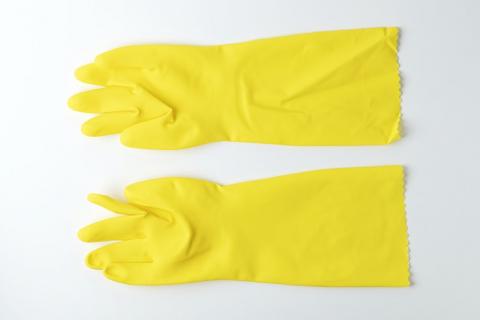Cleaning, Sanitizing and Disinfecting of Surfaces: Part One

Trying to stay well and protect our homes and businesses from infection with COVID-19 can be nerve-wracking. The precautionary steps we need to take can be confusing and sometimes seem conflicting. Understanding the difference between cleaning, sanitizing and disinfecting can help make these important precautionary steps easier and safer.
SARS-CoV-2, the virus that causes COVID-19, is thought to spread mainly from person-to-person, through respiratory droplets produced when an infected person coughs or sneezes. These droplets can land in the mouths or noses of people who are nearby or possibly be inhaled into the lungs.
It may be possible that a person can get COVID-19 by touching a surface or object that has SARS-CoV-2 on it and then touching their own mouth, nose, or possibly their eyes, but this is not thought to be the primary way the virus spreads.
Cleaning and sanitizing or disinfecting surfaces can lower this risk even more and also prevent the spread of other bad bugs we are familiar with such as E.coli and Salmonella and viruses such as norovirus and hepatitis A.
Cleaning, Sanitizing and Disinfecting Are Different
Do you know how cleaning, sanitizing and disinfecting are different, which one you must do first, and what are the best and safest ways to do it? Many people do not, and that can be dangerous. A report from the Centers for Disease Control showed a surprising 16% to 20% increase in poison center calls related to cleaners and disinfectants during January–March 2020; compared with the same period in 2019 and 2018.
That isn’t actual proof that cleaners, sanitizers and disinfectants are being misused in potentially dangerous ways, but there is the possibility of improper use. These chemicals can be dangerous if more is used than specified on the label, different chemical products are mixed together, protective gear is not used, or it is applied in poorly ventilated areas.
Each step, cleaning, sanitizing and disinfecting has its own guidelines for safety and effectiveness. Some online guidance has used these terms interchangeably which can add to confusion. In all cases, reading the label carefully and following the directions is key to its safe use.
To decrease the risk of spreading infection with COVID-19 or other dangerous bugs, understand the difference and when and how to use these sanitary precautions safely and effectively.
Cleaning
Cleaning is the physical removal of soil and/or food matter from a surface using soap or detergent, and water. In this step, cleaning, with scrubbing as needed, physically removes dirt, germs and other debris, such as dried food and grease from surfaces. This lowers the risk of spreading COVID-19 infection.
Sanitizing and disinfecting will work best if the surface has been cleaned first. Dirt and debris that remain on surfaces interfere with the effectiveness of these processes.
Sanitizing
Sanitizing lowers the number of germs on previously cleaned and rinsed off surfaces or objects to a safe level, as judged by public health standards or requirements. Some sanitizers may be used on food-contact surfaces such as countertops, cutting boards, or children’s highchairs. Sanitizers for food-contact surfaces are formulated in a way to be used without rinsing. They usually must remain on the surface to air dry.
Note: Some sanitizers can be used only for non-food contact surfaces like toilet bowls and carpets, or in the air.
For safety, it is important to read and follow the label directions and to use the sanitizer for the stated purposes only.
Did You Know?
The U.S. Environmental Protection Agency (EPA) regulates antimicrobial products to be used on surfaces, such as sanitizers and disinfectants, as pesticides. If a product shows "EPA" anywhere on the label, you know it is a pesticide and NOT meant for use on the body.
It is illegal to use a pesticide in a manner that is inconsistent with the label instructions. So reading and following label instructions is essential.
The U.S. Food and Drug Administration (FDA) regulates antimicrobial products for people and pets as drugs/antiseptics.
Disinfecting
Disinfectants are generally stronger than surface sanitizers. They are used to kill germs on clean surfaces or objects. These solutions are generally too strong to be used on food contact surfaces as they leave a residue that could contaminate food. If a food contact surface must be disinfected, (say, if a person known or suspected to be infected with COVID-19 sneezes on a food preparation table) the surface should be rinsed after disinfection, following label directions. According to the Institute for Food Safety at Cornell University, if the water is not sterile (tap water is clean but not sterile), the surface must be sanitized after the disinfectant residue is rinsed off and before food is placed on the surface.
To be effective, both sanitizers and disinfectants must remain wet on surfaces for the complete contact time stated in the directions. If a sanitizing wipe is used, this might mean using additional wipes if the surface starts to dry off before the required contact time is finished.
Did You Know?
Sanitizers and disinfectants are meant for surfaces and not designed for use on hands. Hand antiseptics (also known as hand sanitizers) are not designed for non-body surfaces.
